Sexual orientation in the civil service
What proportion of civil servants are LGB+ – and how does this vary by seniority and department?
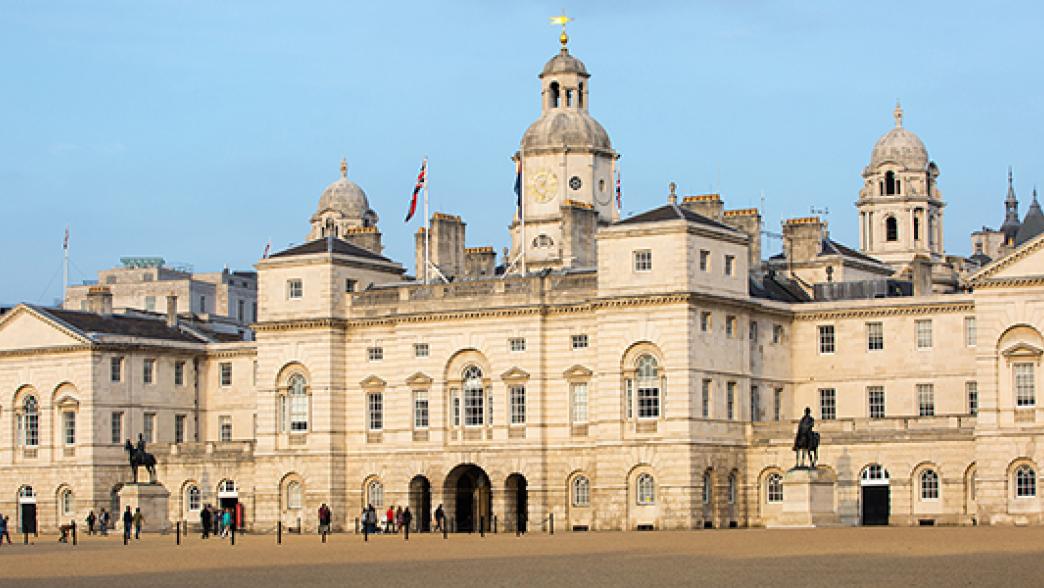
Why is it important that the LGB+ population is represented in the civil service?
According to the Civil Service Diversity and Inclusion Strategy for 2022 to 2025, “a truly diverse workforce and culture of openness and inclusivity” acts as “a means of delivering better outcomes to the citizens we serve.” 13 Civil Service, Civil Service Diversity and Inclusion Strategy: 2022 to 2025, 24 February 2022, www.gov.uk/government/publications/civil-service-diversity-and-inclusion-strategy-2022-to-2025
The civil service loses out on top talent when it fails to properly reach into different communities to attract, appoint and retain the best people for the job. And employing staff reflecting the society it serves allows government to draw on the experiences of officials to better understand the impact of policy decisions on the public.
The Annual Civil Service Employment Survey (ACSES) invites civil servants to record their sexual orientation as “Heterosexual/straight”, “Gay or Lesbian”, “Bisexual” or “Other”. Our use of the term LGB+ refers to staff who report belonging to one of the last three groups. The term 'LGBT+' is not used because this data only refers to sexual orientation. The Annual Civil Service Employment Survey does not collect data on the gender identities of civil servants.
What proportion of civil servants are LGB+?
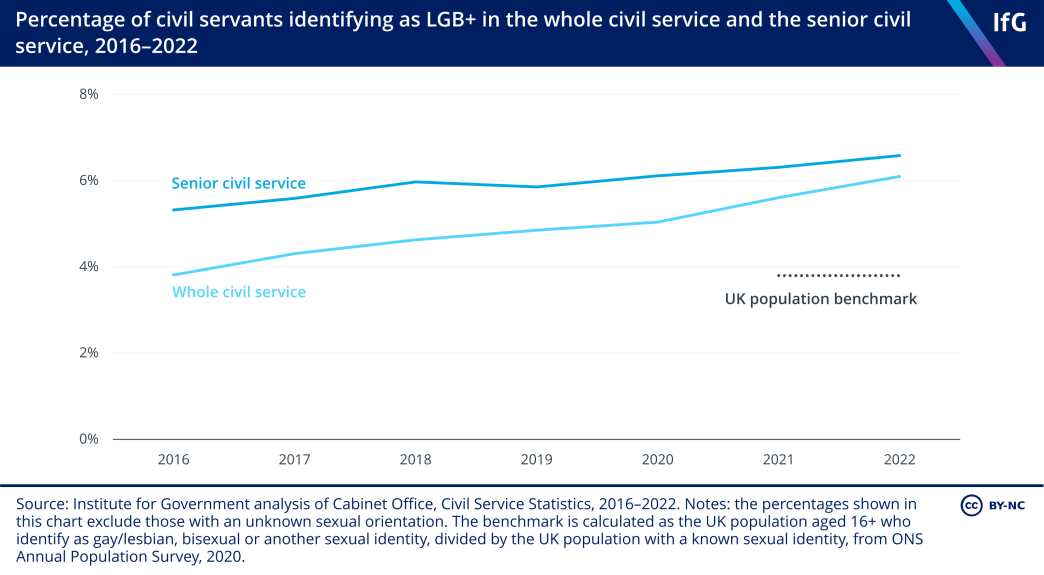
As of 2022, 6.1% of civil servants who declare their sexual orientation are lesbian, gay, bisexual, or recorded their sexual orientation as ‘other’ (LGB+), an increase from 3.8% in 2016.
These figures are higher in the senior civil service (SCS), where 6.6% of staff are LGB+, up from 5.3% in 2016. Unlike for disabled staff, employees from a minority ethnic background, or female civil servants, LGB+ civil servants make up a higher proportion of the SCS than the whole civil service.
How does this vary by seniority?
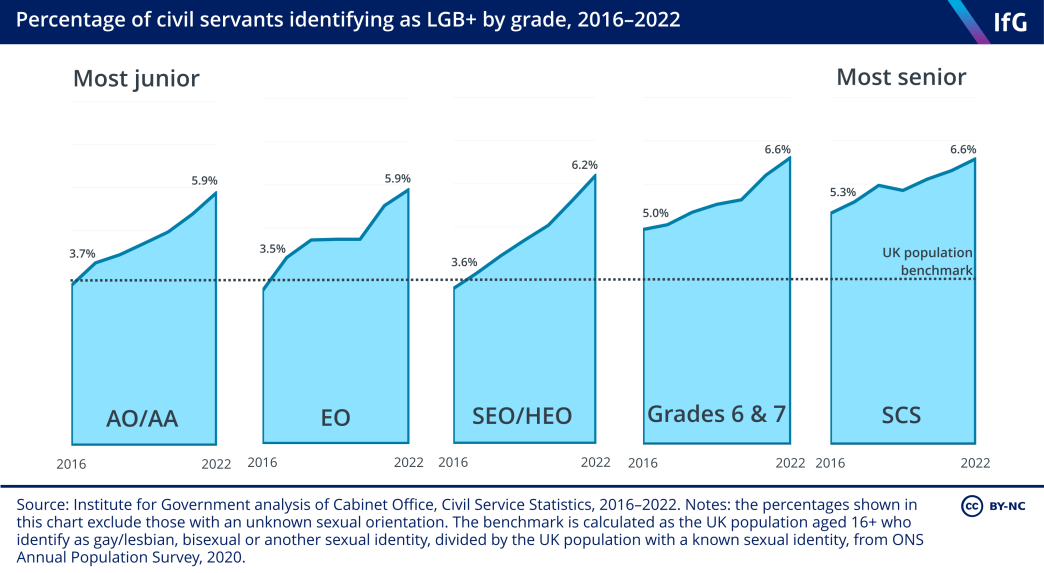
The percentage of LGB+ civil servants has increased at every grade since 2016, exceeding the UK population benchmark of 3.8%.
The most junior grades, executive officers (EO) and administrative officers and assistants (AO/AA), have the lowest proportions – at these levels, 5.9% of civil servants declare themselves as lesbian, gay, bisexual or ‘other’.
The proportion of LGB+ civil servants is higher at more senior grades. While these figures have grown at a slower rate than among lower grades, the 2016 proportion was already relatively high to begin with, with 5.3% LGB+ at SCS and 5% at Grades 6 and 7, above the 3.8% population benchmark.
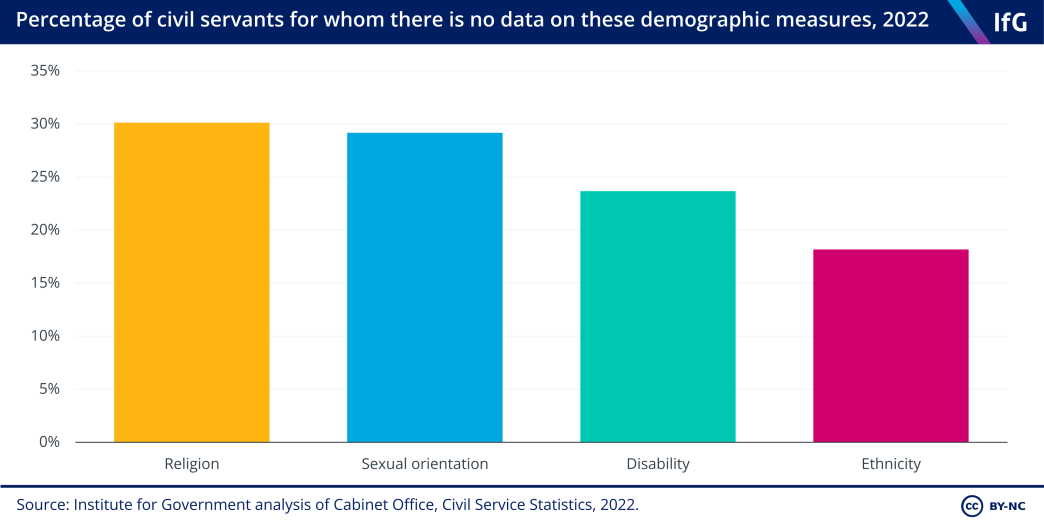
There is no data on the sexual orientation of 29% of civil servants, though this figure has improved from 2021 when data was unavailable for 31% of officials. While individuals may have good reasons not to share their sexual orientation, this data is important in determining the true representativeness of the civil service.
How does representation vary by department?
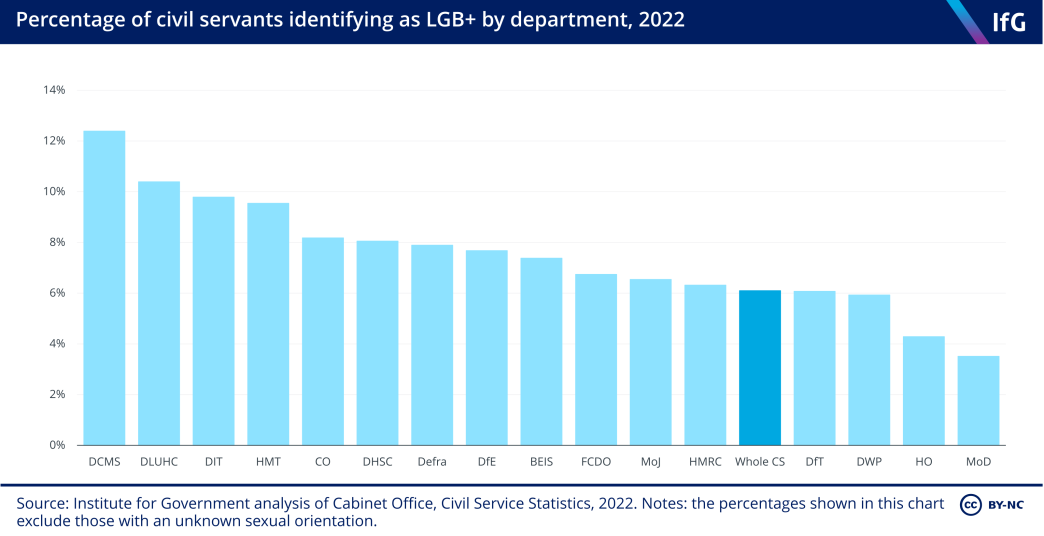
Across the whole civil service, 6.1% of employees have declared themselves as LGB+, where known. In the Department for Digital, Culture, Media and Sport (DCMS), 12.4% of civil servants are LGB+, whereas this figure falls to 4.3% in the Home Office. LGB+ civil servants make up 3.5% of the Ministry of Defence (MoD), the only department with a proportion below the UK population benchmark of 3.8%.
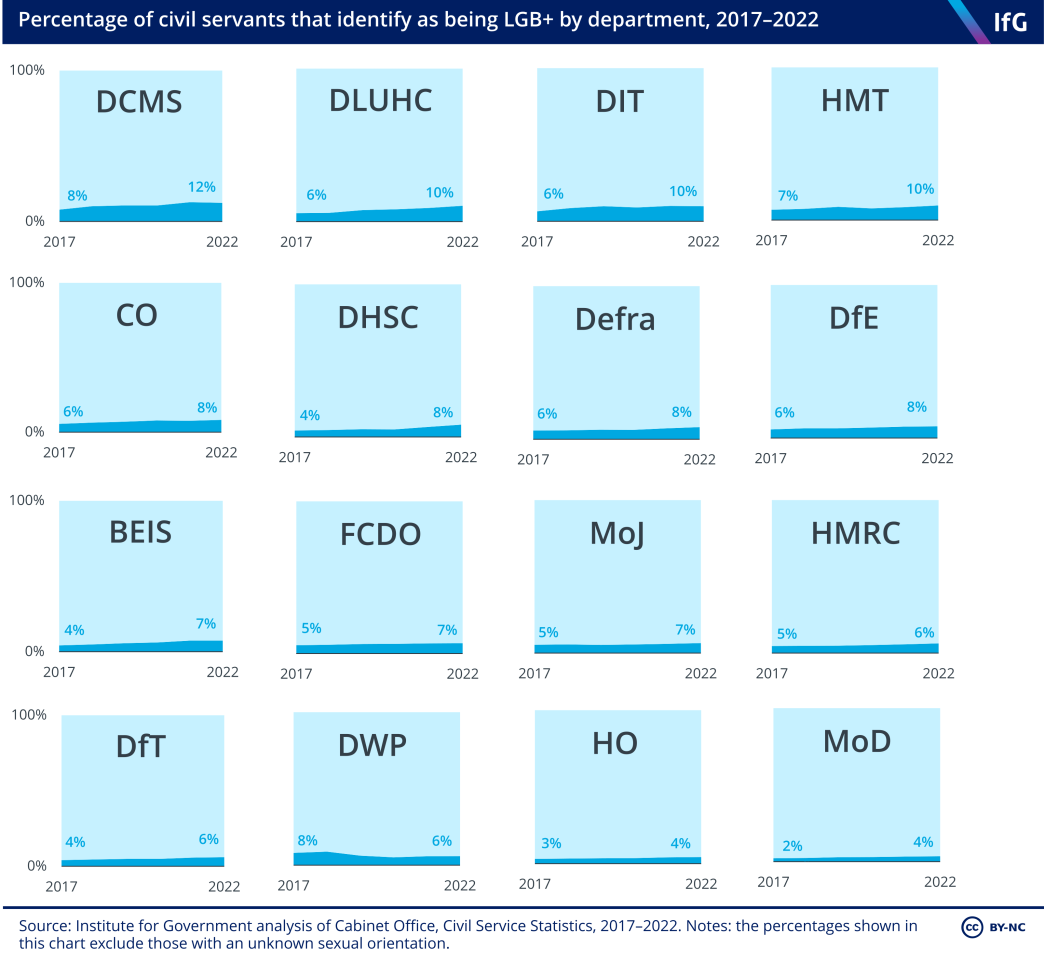
The proportion of LGB+ staff has risen in almost all departments since 2017, with the exception of the Department for Work and Pensions (DWP), where the figure fell from 8% to 6% from 2017 to 2022.
Four departments saw an increase of 4 percentage points in the proportion of LGB+ staff in this period: DCMS, the Department for Levelling Up, Housing and Communities (DLUHC), the Department for International Trade (DIT) and the Department of Health and Social Care (DHSC).
What steps are being taken to support LGB+ civil servants?
A number of initiatives have been launched to support LGB+ civil servants:
- A network for LGBT+ civil servants, aiming to create a more diverse, inclusive and equal workplace. 14 Civil Service LGBT+ Network, Say “hello” to the Civil Service LGBT+ Network, Civil Service blog, 26 March 2018, www.civilservice.lgbt/archives/2018/03/26/say-hello-civil-service-lgbt-network/
- A conference for LGBT+ civil servants, focused on workplace inclusion and career development. 15 James Jefferson, A conference for LGBT+ civil servants, Civil Service LGBT+ Network, 14 December 2021, www.civilservice.lgbt/news/2021/12/14/a-conference-for-lgbt-civil-servants
- A mentoring scheme to support LGBT+ civil servants in their career development and to highlight LGBT+ role models. 16 Tevye Markson, More than 900 LGBT+ civil servants sign up to award-winning mentoring scheme, Civil Service World, 22 June 2022, www.civilserviceworld.com/news/article/close-to-1000-sign-up-to-awardwinning-lgbt-network-mentoring-scheme
- Topic
- Civil service
- Department
- Cabinet Office
- Publisher
- Institute for Government